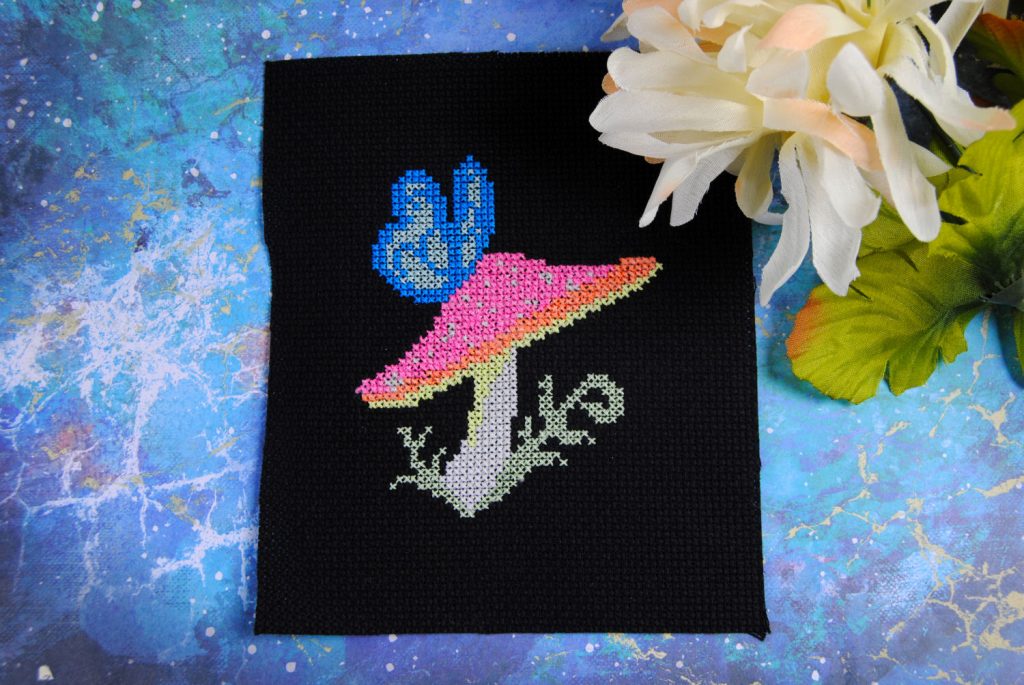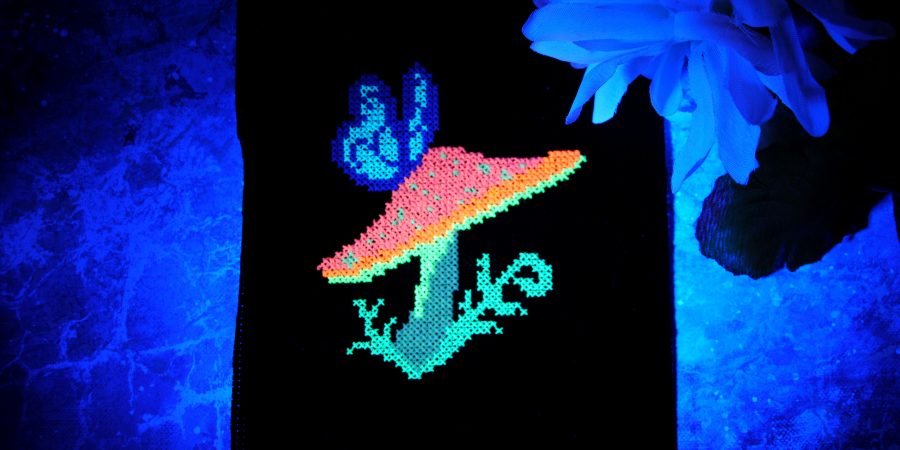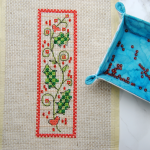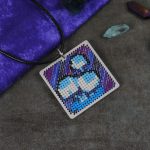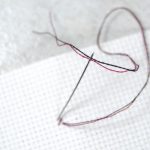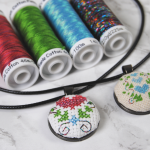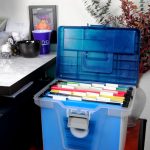This week I wanted to answer some common questions about working with glow in the dark thread. There’s a lot to cover, so I apologize in advance if this ends up being a long post. If there’s anything I missed though, feel free to ask! I’m always happy to answer your questions.
This post may contain affiliate links. If you buy something using one of these links, I earn a small commission. However, there is no extra cost to you. Thanks for understanding! Learn more in my Disclosures & Privacy Policy.
Table of Contents
Thread Brands
For cross stitch, there are three brands I know of that have glow in the dark thread. I only own two of them, but I will mention the third in case you want to try it.
I don’t know anything about the chemical process used to make things glow, but it definitely affects the texture of anything it’s used on, and thread is no different. If you’re thinking certain brands will be ‘easier’ to work with, it is possible they’ll seem that way. But they’ll still have their own unique difficulties to work with. There’s just no avoiding it.
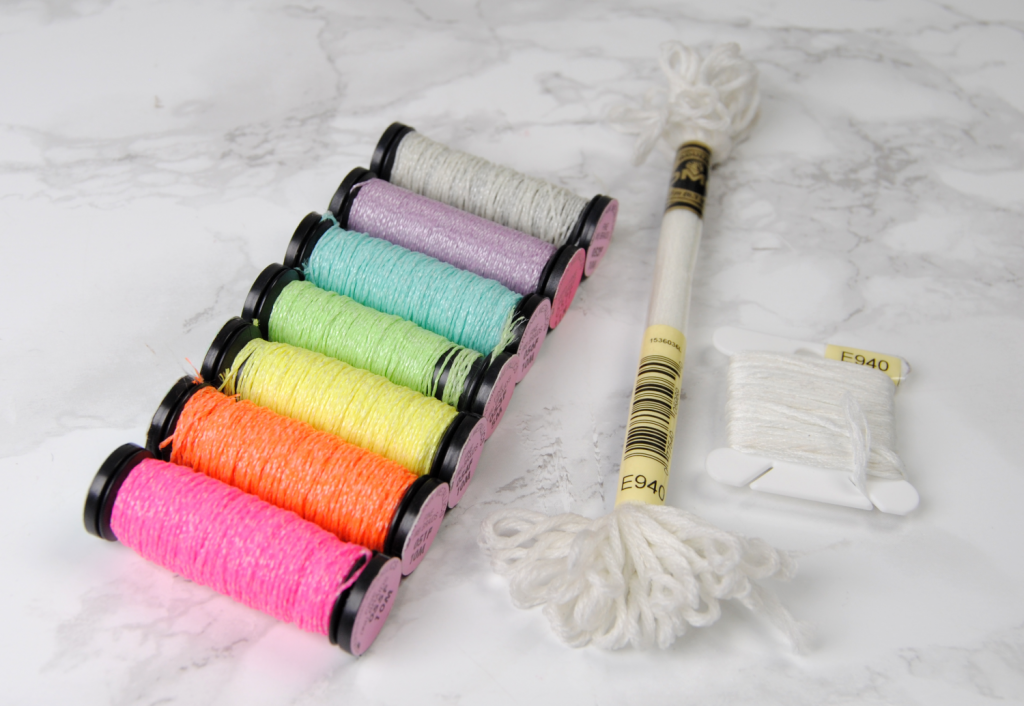
DMC E940
DMC brand glow in the dark thread is probably what you’ll be most familiar with. This can be found at most major craft stores. In the US I’ve seen it at Michaels and Joanns, and even at Wal-Mart. If you’re looking for it online, you’ll want to search using the number E940.
Looking at the skein above you’ll notice it’s much… poofier than a normal skein of DMC thread. You can almost imagine just by looking at how it will behave and attempt to fray as you work.
It is, however, very soft. It’s got a lovely feel to it that doesn’t quite make up for how absolutely horrid it is to work with.
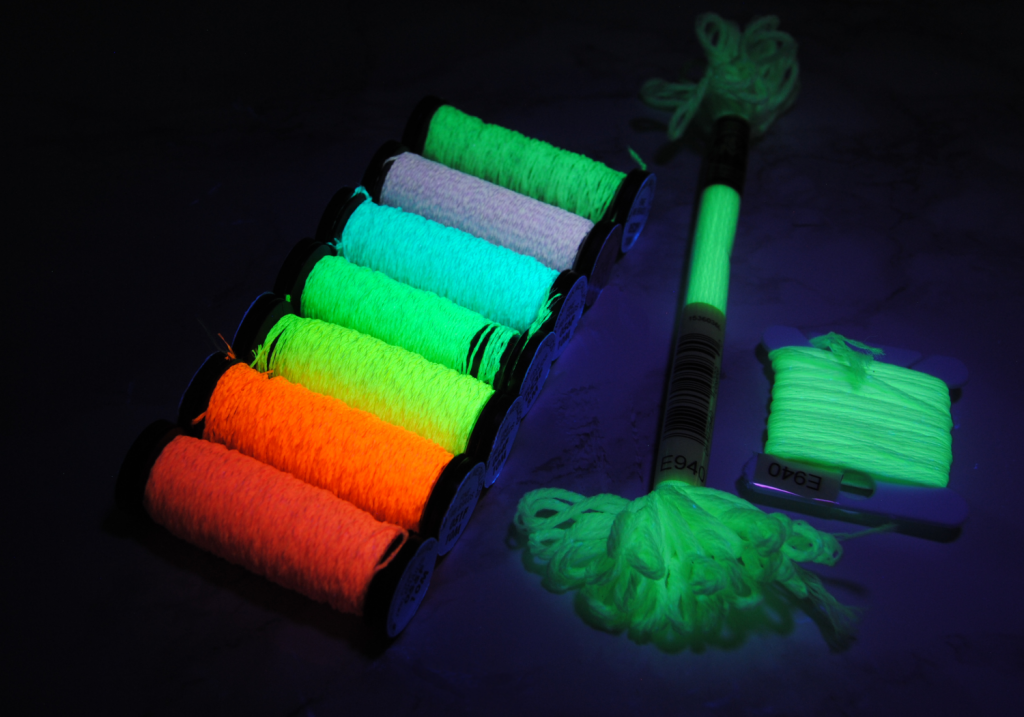
Kreinik 052F – 057F
The brand I generally prefer to use for glow in the dark items is Kreinik. I’ll outline the benefits and compare the two later in this article, but for now the biggest obvious different is that Kreinik has multiple colors.
In the Kreinik numbering convention, glow threads are denoted by an F and start at 052. You can order straight from their website or from your Local Needlework Shop.
The photo is a bit misleading though, as they have unfortunately discontinued the Blue and Purple threads. I was curious as to why they had been discontinued, so I spoke to Dena from Kreinik. It turns out the materials they had been using to manufacture them are no longer available. Which likely means there just wasn’t enough demand for the raw material for those companies to keep making it to begin with.
They are still possible to be found if your LNS has backstock of it, but they’re going to be relatively difficult to locate. Regardless, that’s still 5 available colors compared to DMC’s 1.
The downside however, is that Kreinik has a much more plastic texture to it. While not as bad as the E940, some colors do fray more than others and they’re all pretty rough in texture as well. But I’ll discuss that more when I start stitching.
Rainbow Gallery PB300
Here’s a brand I haven’t actually tried yet. I’ve heard great things about their metallic range, and happened to discover they had a glow in the dark thread as well. Just the one white thread that glows green though, same as DMC. If you’re curious, look for Rainbow Gallery PB300. Do let me know what you think if you’ve tried it!
Sewing Thread
Other brands do carry glow in the dark thread. However, most are designed for sewing or embroidery machines. For example, Sulky has a line of Glow in the Dark thread. However, these are a 40 weight thread and thus much thinner than the Petites I used in my Sulky thread review. These kinds of threads would probably make cool blending filaments or simply need to be doubled up, though. If you can get your hands on them easily, they’re worth a try. Plus, they DO have blue and purple available. Just saying. 😉
Edit: I ended up trying these out too! I wrote a separate post on my experience with Sulky Glowy!
Stitching with Glow in the Dark Thread
The pattern I’ll be working on today is one I designed specifically for this post to showcase the different threads I had on hand. You can find the pattern on my Patreon.
I started off with the DMC E940. Like your standard DMC cotton it comes in 6 strands. I split two strands away and stitched with just that.
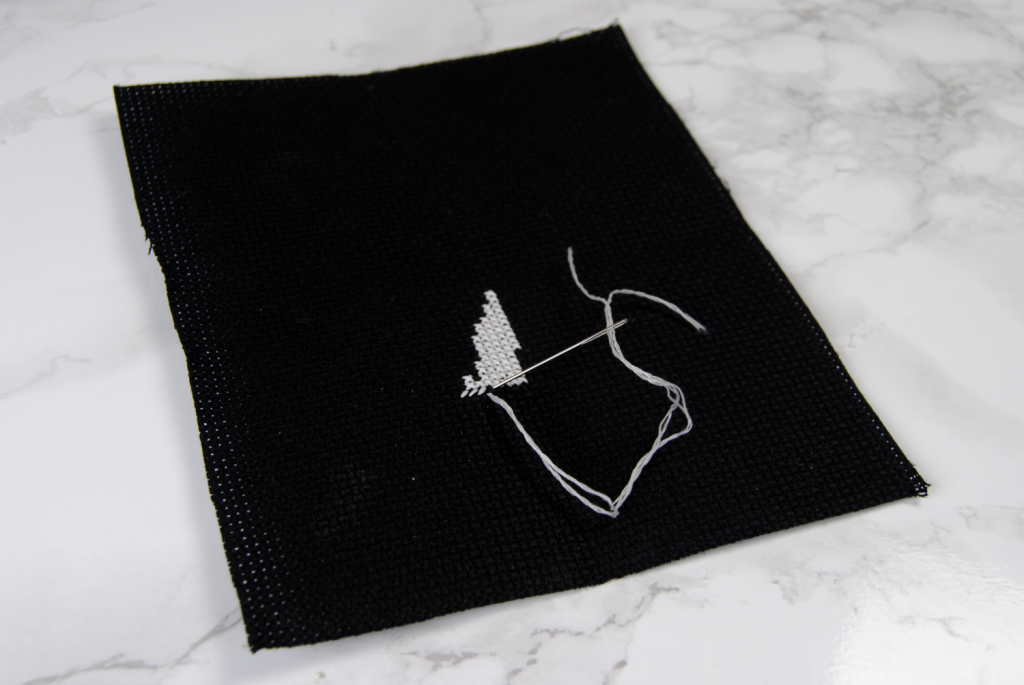
This is a pretty soft thread, and it glided easily through the fabric without snagging. I did note that my two strands quickly became 4, and then 6 again just from how much it was fraying.
I would recommend using lengths about half as long as usual in order to combat this. Or perhaps conditioning it with some beeswax or similar products. Taking it slowly also helped as I was able to better control how the flat the stitches laid.
I’ve worked with this thread a lot, so I kept it small for this project. Despite its annoyances, I definitely recommend sticking to DMC if you’re doing large areas or entire projects using glow in the dark thread. It’s cheaper in the long run, and just has a nicer texture to it even when the lights are on.
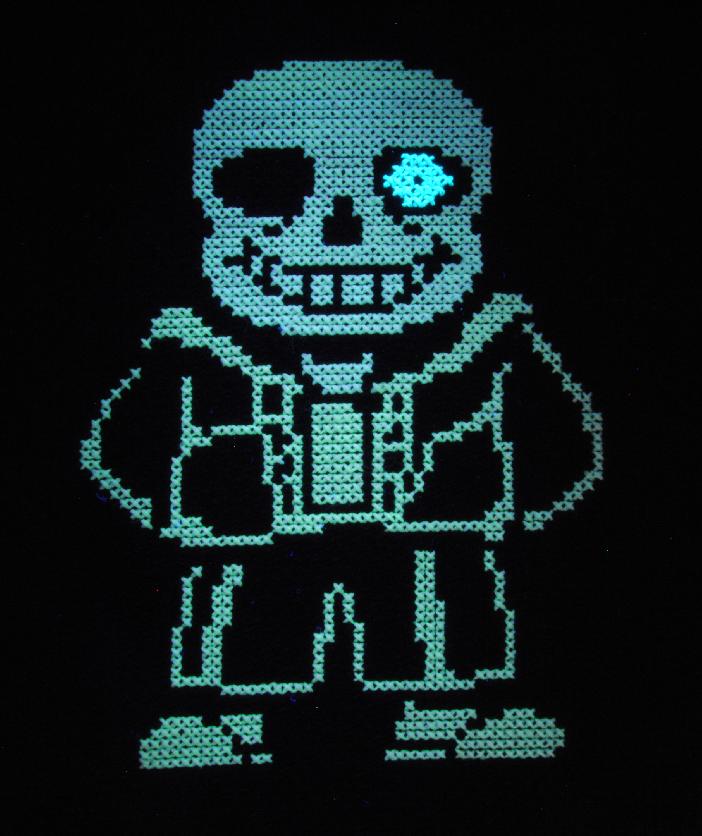
As an example, I did my Sans pattern using DMC E940 for most of it, and Kreinik 056F just for his eye.
Kreinik #8 Fine Braid
One thing I did not mention in the brand section is that Kreinik comes in various sizes. The most common used for cross stitch are the #8 Fine Braid and the #4 Very Fine braid. On 14 count, most people seem to prefer to use #8 so I’ll start with that here.
Right away you’ll see that this is a little thicker than the two strands of DMC glow in the dark thread. It has pretty decent coverage, but due to the plastic texture of the glow in the dark, I struggled to get my stitches to stay even.

If you thought you needed to go slow with the DMC thread, I’d recommend taking this one even slower. The yellow didn’t seem to fray at all, however. So at least I wasn’t dealing with that at the same time.
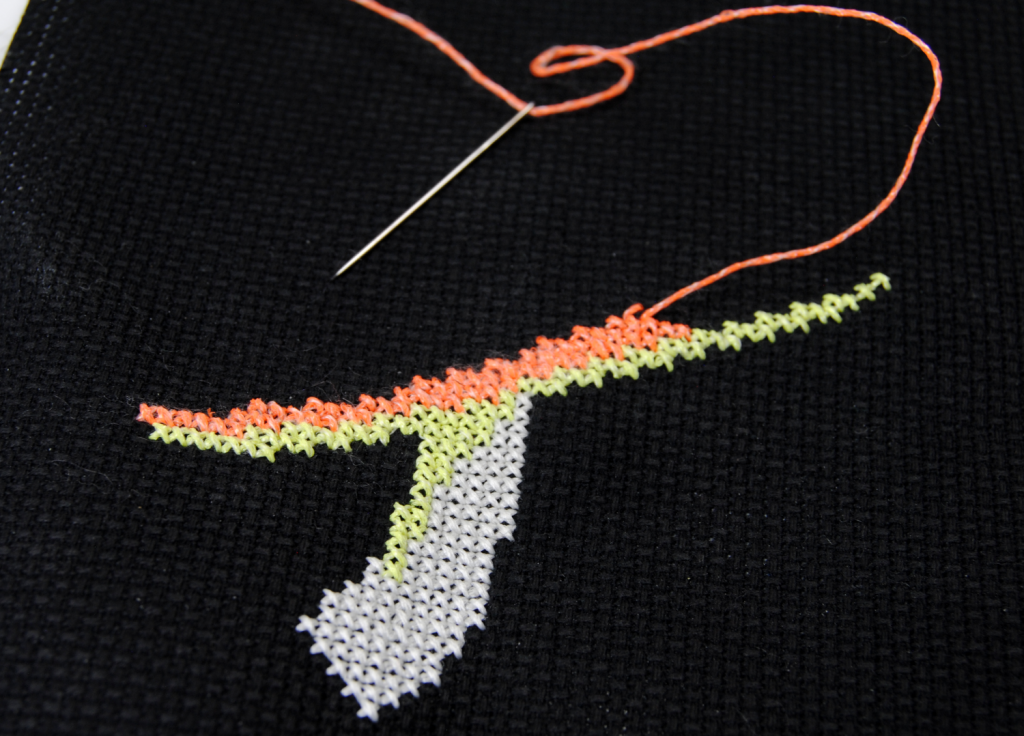
I soldiered on and got through the orange without further incident. It also didn’t seem to fray much, except at the part I had my needle. I found myself moving my needle up and down the length of thread to make sure it wasn’t wearing any one section too thin.
Glow intensity
Finally, I reached another part of my pattern that I wanted to be white. This time I used the Kreinik 052F so we could compare it to the DMC glow in the dark in the same color.
For whatever reason I found this particular color liked to curl up a ton. Granted, they come on spools so the thread is just used to being wound around a cylindrical object. However, no matter how much I tried to straighten it out it kept curling up and making my stitches lay unevenly.

Once I finished this section however, I tested out the glow and found the Kreinik thread to be much brighter than the DMC equivalent.
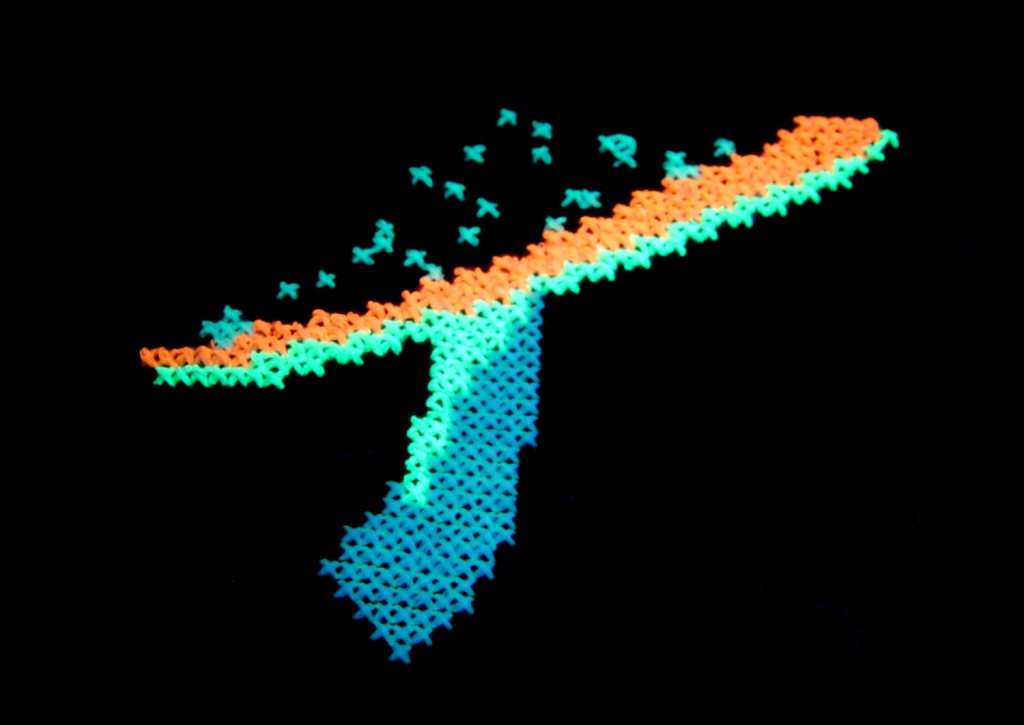
This was another point Dena had mentioned when I reached out to her — Kreinik had experimented with blending in softer materials to try and make the braid softer and easier to work with, but they found that it negated the glow effect too much.
I personally love how bright the glow is and is well worth working with the rough thread to achieve that brightness!
Handling Fraying
Up until now, I hadn’t had much issue with the Kreinik threads fraying. That all changed once I got to 055F. I found this particular glow in the dark color to constantly want to rip apart no matter how slow I went.
I also found myself struggling to thread my needle with this one, as it frayed instantly upon trimming. It did not bother to wait to be dragged through the fabric a few times before attempting to come apart.
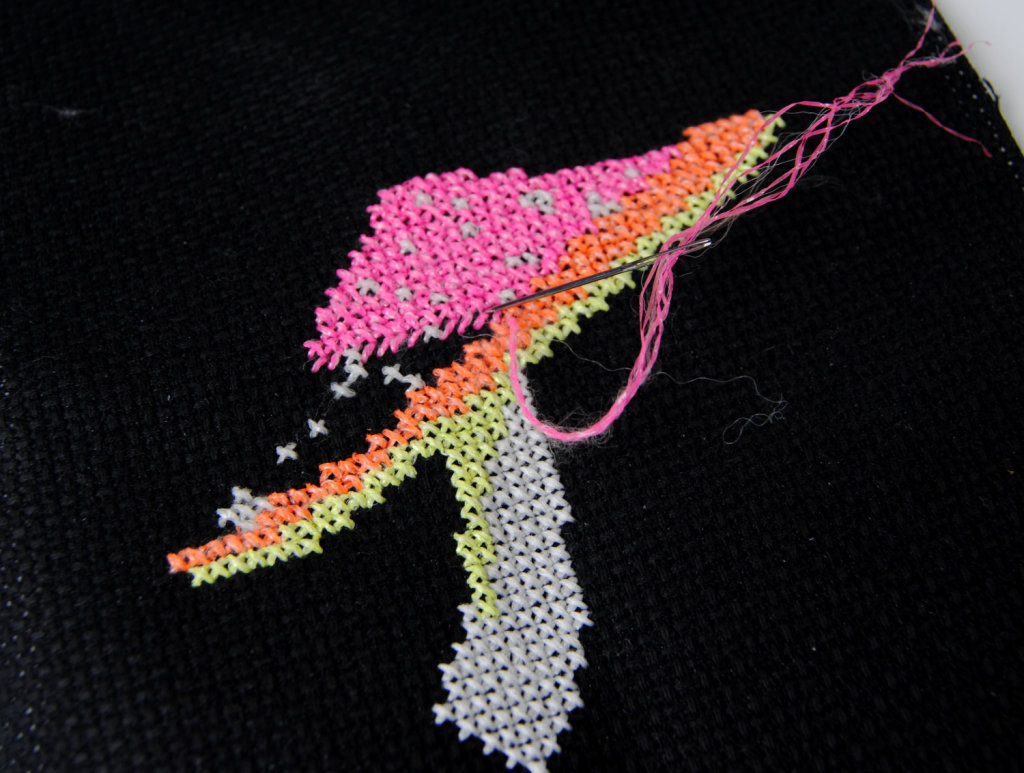
I’m not sure if I got a bad batch or if the chemical process for red just affected the thread differently. I continued stitching with it anyway, twisting it back into a manageable shape as I worked. It definitely required a bit more concentration, however.
If I had to do this all over again, I’d have used this as an excuse to finally try out Thread Magic or another thread conditioner. Regardless, fraying isn’t the end of the world. Take it slow and keep on stitching, trimming away the overly frayed bits as you work.
Kreinik #4 Very Fine Braid
After fighting with the thread to get it to lay flat throughout most of the mushroom, I decided to do the rest in #4 Very Fine braid instead.
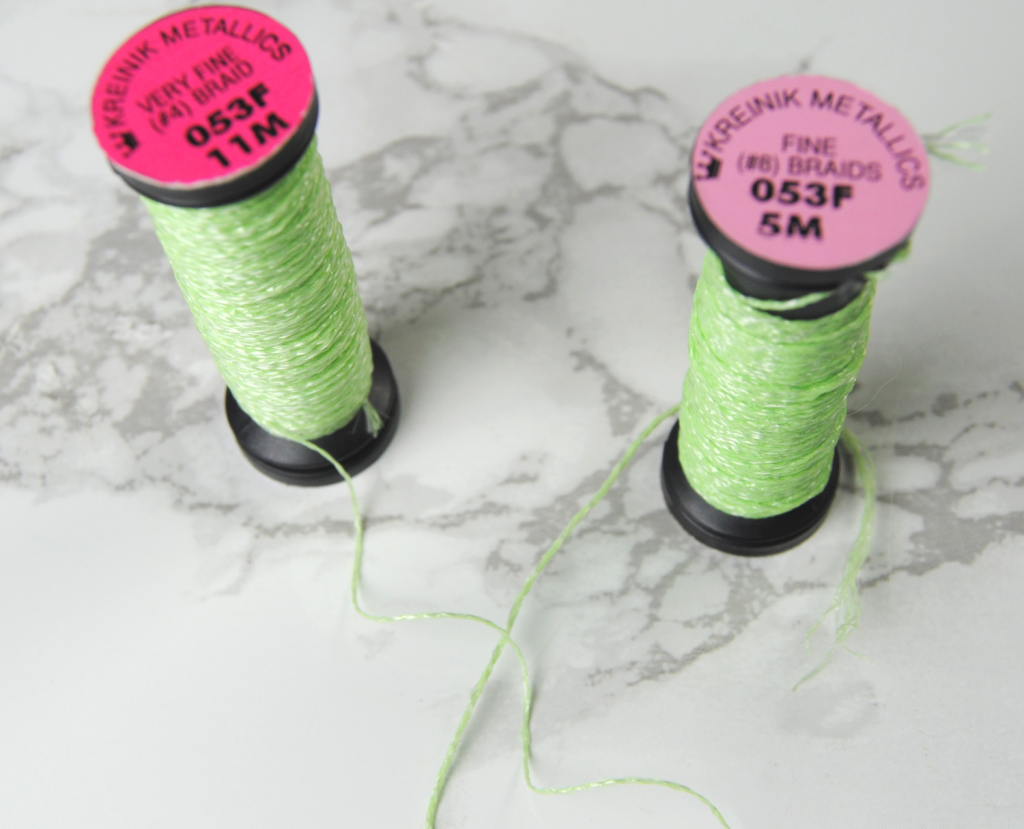
Now, when working with Kreinik I generally use #4 anyway. I don’t like my stitches to be overly puffy, and prefer them to actually look like Xs. I know that many stitchers DO want their stitches to look more like pixels, though. There is no right or wrong here, just personal preference.
Regardless, this would serve to be a great way to compare the coverage of the two so you can see them in action next to each other.
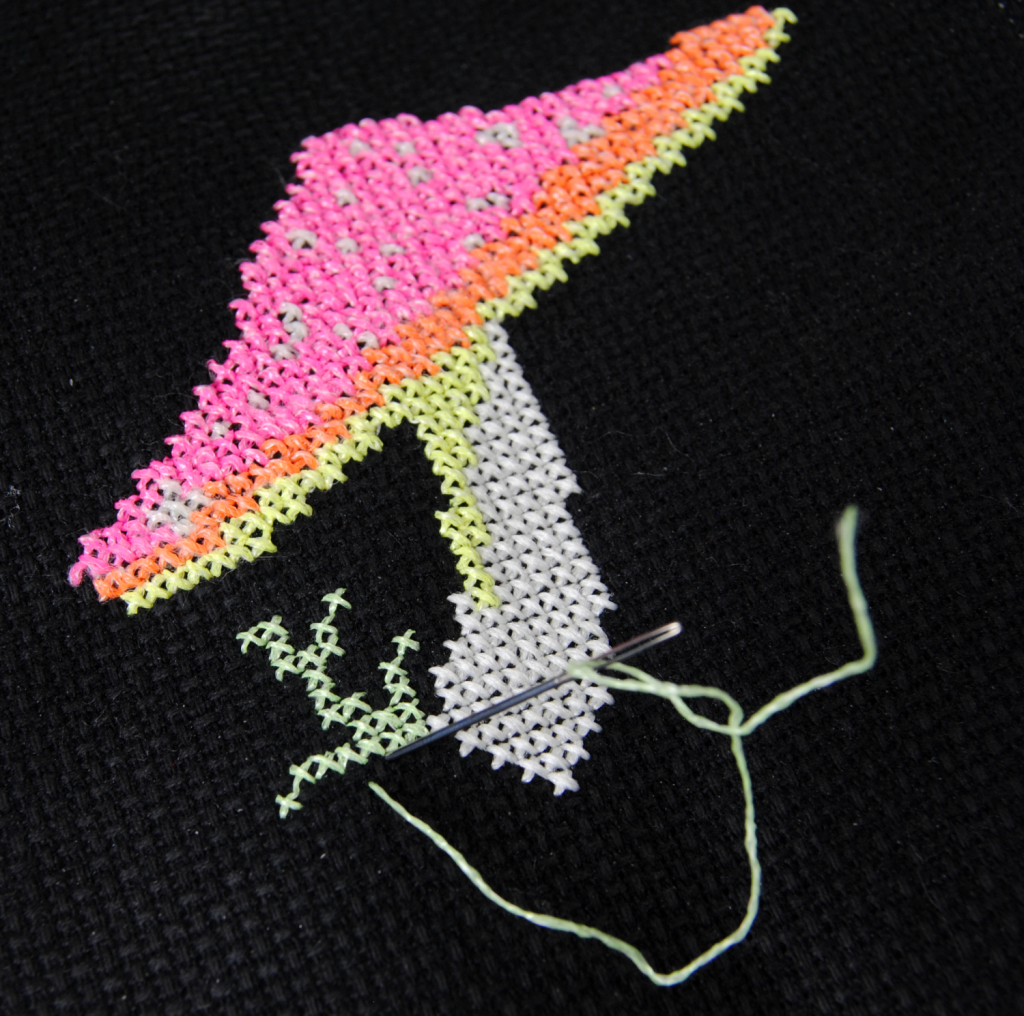
Right away I noticed it was much easier to get my stitches even. You can see that it lets through a bit more of the fabric, but honestly isn’t much thinner than the 2 strands of DMC.
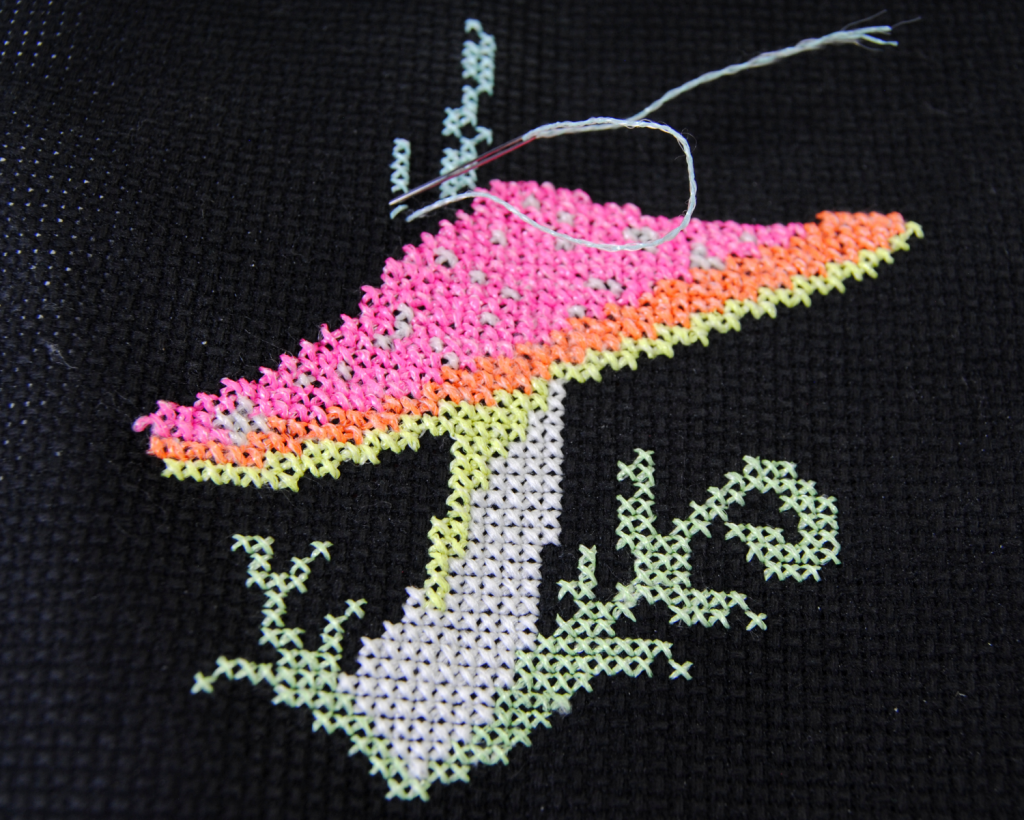
The blue did start fraying pretty early, but nowhere near as bad as the pink had. Overall I’m much happier with how the #4 braid looks, but your mileage may vary.
Plain ol’ DMC Cotton
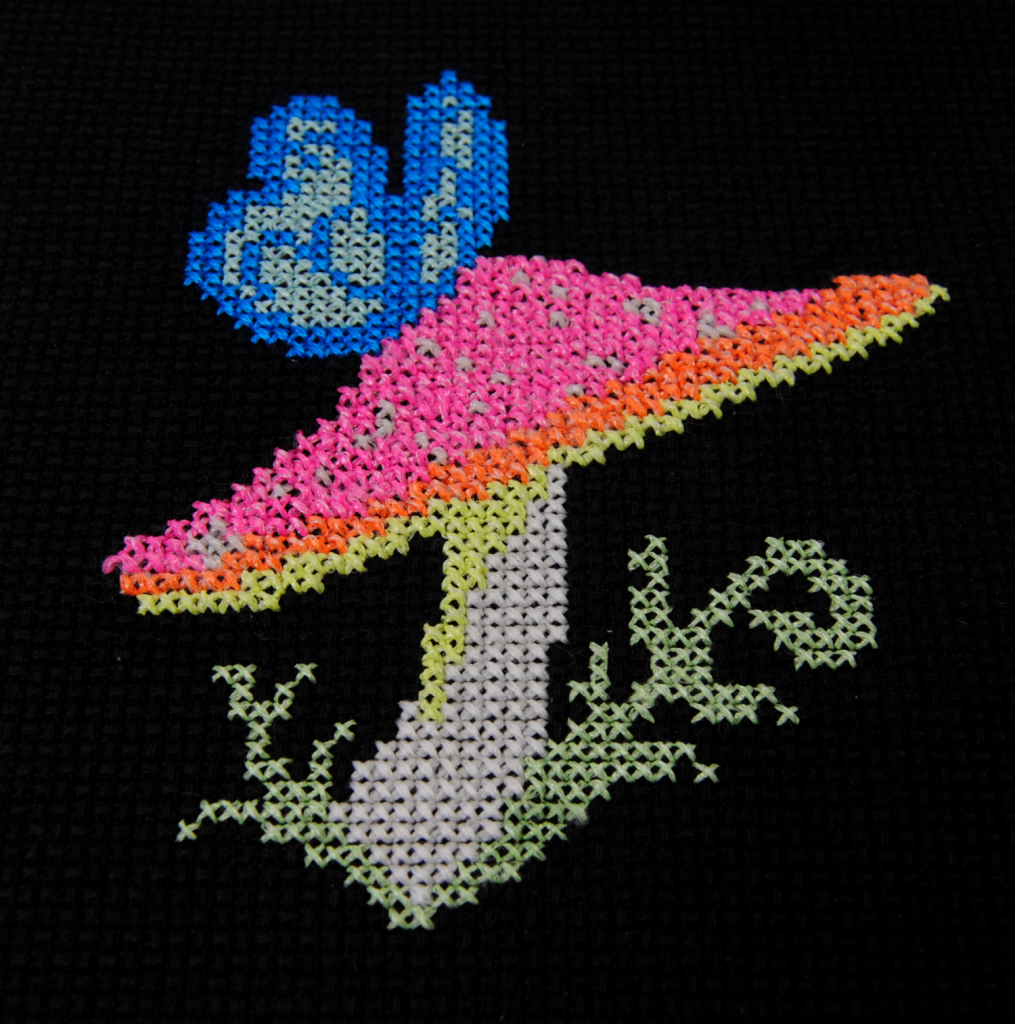
I stitched the last part up with 2 strands of some plain old DMC 995. I bet you’re wondering what plain DMC Cotton is doing in a glow in the dark thread review, huh?
Well, there’s a few reasons. First, I wanted to show it as a reference point for how the glow threads look in comparison to thread you’re probably more familiar with.
The second reason is from a design aspect. Most of the time you’re not going to be doing patterns entirely with glow thread. In fact, I recommend using this kinda thing mainly as accents on your designs. The ‘negative’ space that shows through when using a non-glow thread with a glow thread can be its own design. You can even ‘hide’ glow in the dark secrets among regular DMC Blanc thread!
When you turn off the light here you can see the swirls in the butterfly wings in the darkness much clearer.
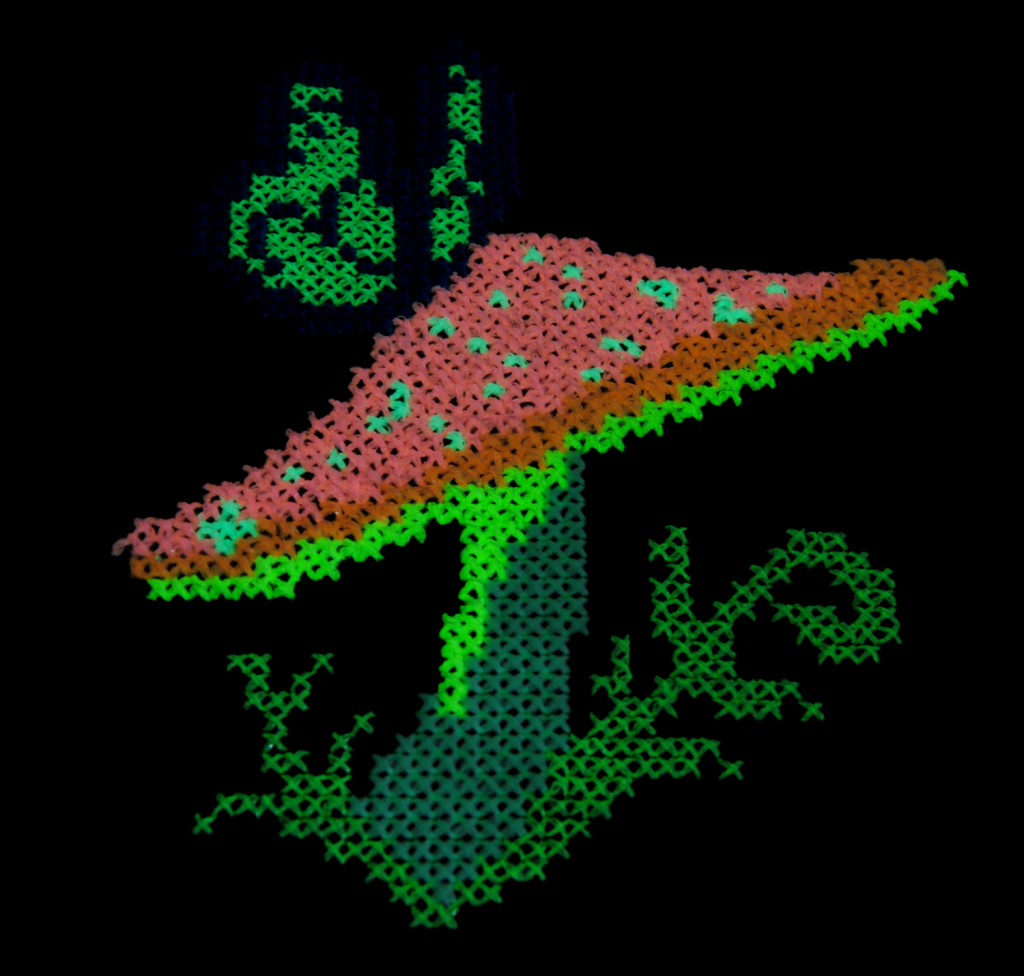
UV Reflective thread
The third reason is because while cottons may not glow in the dark, some of them are UV reflective. Not all of them, mind you. But if your design is going under a blacklight, you can definitely use DMC cottons to get some extra colors into your design without having to find specialty threads like Kreinik!
Look how bright that 995 looks under a blacklight compared to the actual DMC glow in the dark thread!
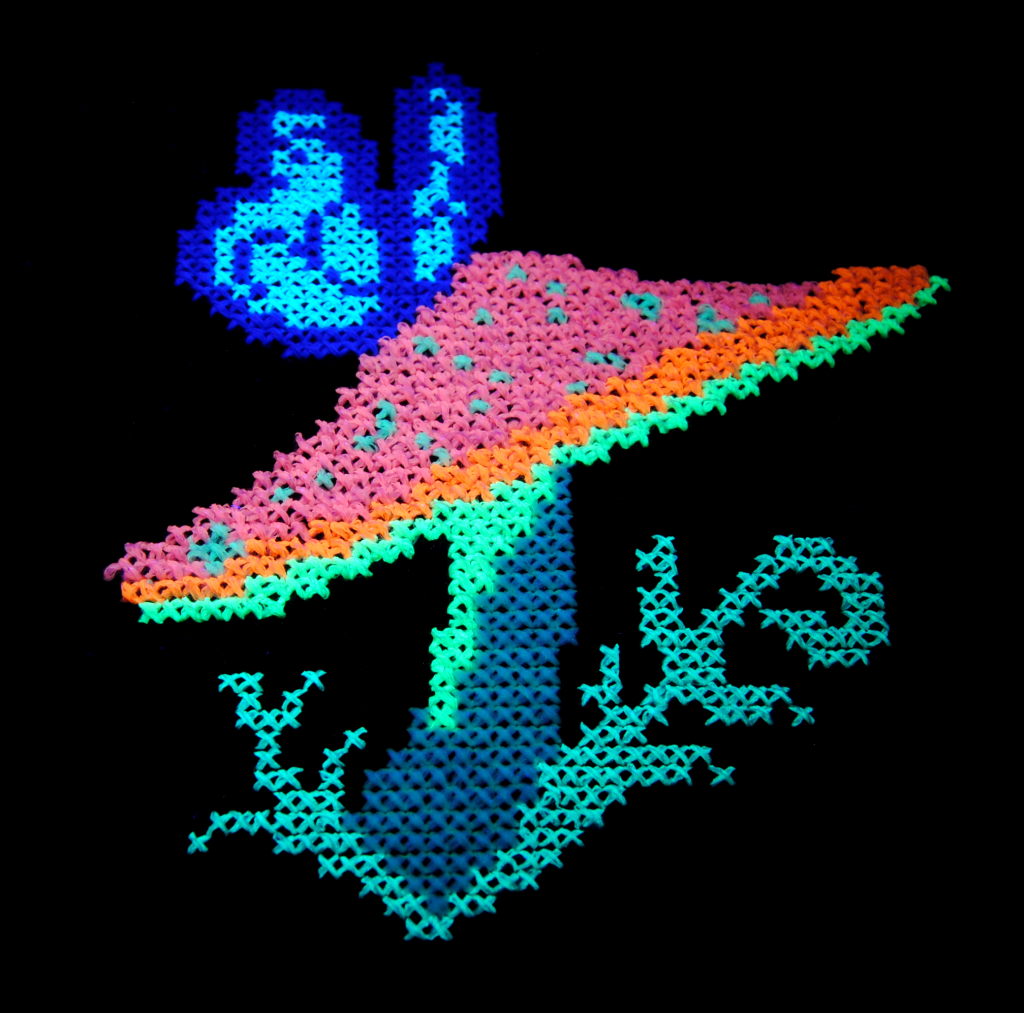
Remember how I mentioned you could hide glow messages in Blanc DMC thread? The same cannot be said for B5200! While DMC Blanc and B5200 may both look like white to the naked eye, B5200 is UV reflective and actually glows much brighter than DMC glow under blacklight.
In my Skyrim Constellation series I used Kreinik 052F for the stars, and B5200 for the lines connecting them. The effect is quite stunning when you put it under a blacklight:
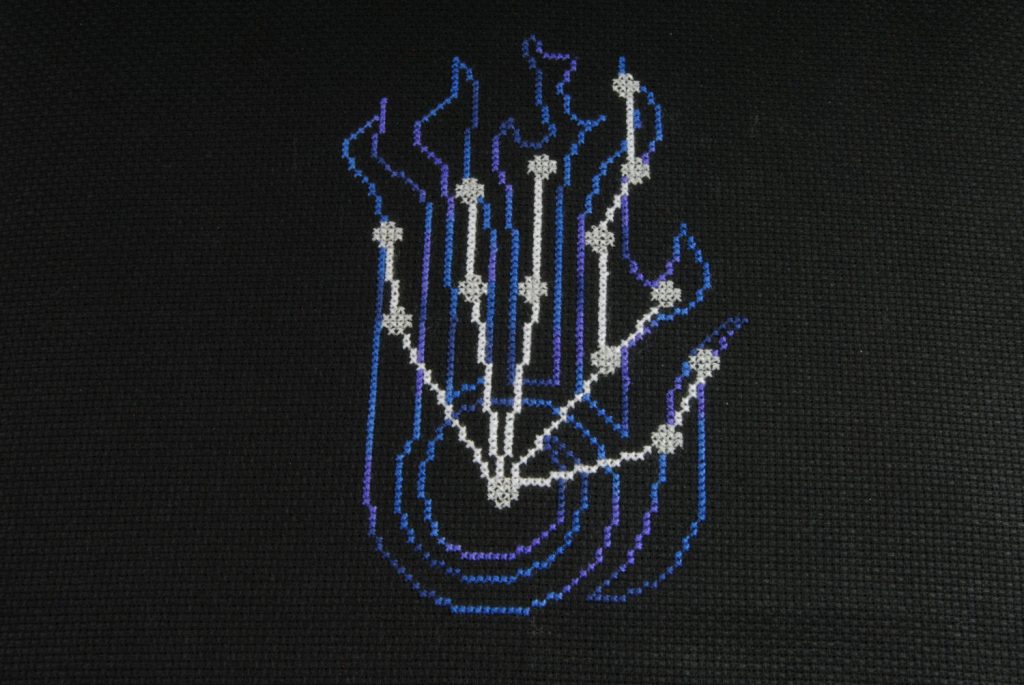
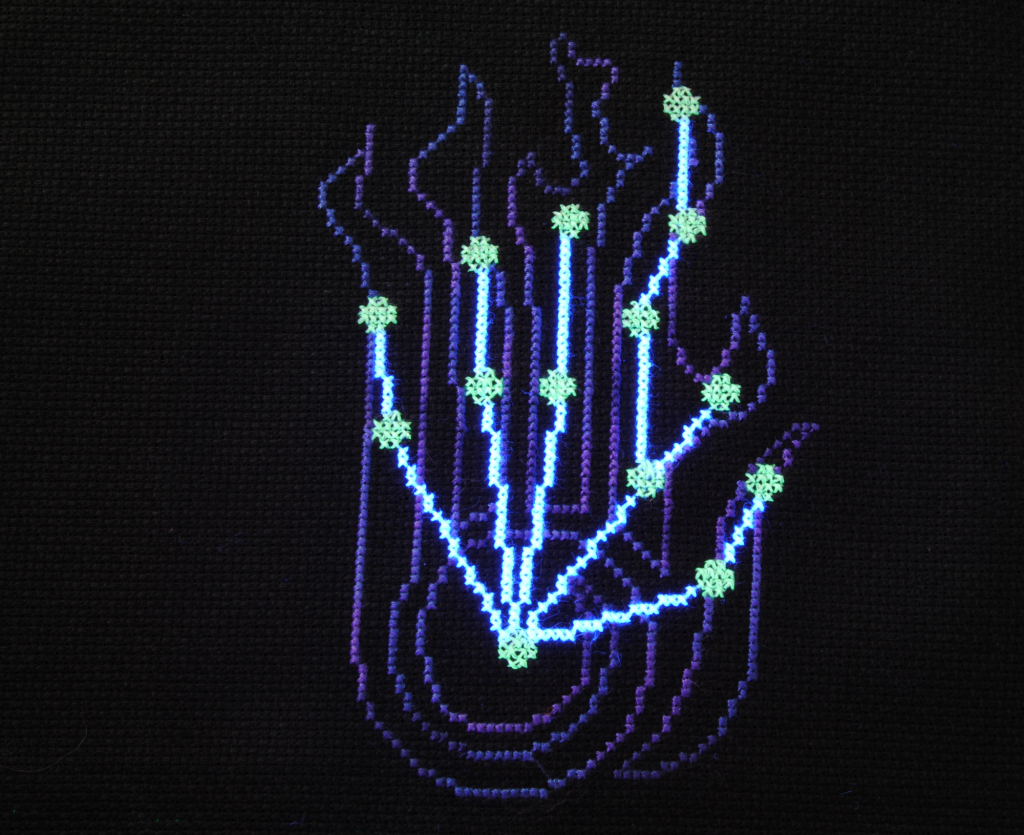
Some DMC cottons don’t reflect at all, and others just glow a little. I don’t have a full list for you, but shining a blacklight on your thread box should make it fairly clear which colors you can work with!
DO NOT IRON YOUR FINISHED PIECE
Got your attention? Good. Kreinik and Sulky brand glow thread especially is very much plastic. It will melt. DMC seems to resist the heat a bit better as it’s blended with cotton, but the glow will melt away leaving you with white thread.
If you really need to iron your piece, try to work around the glow in the dark bits. Or iron just the background fabric using the tip of the iron to get in as close as you’re willing.
You can also try using a cloth between your fabric and the iron, but you’ll want to constantly be checking to make sure you aren’t damaging the thread.
Photographing Glow in the Dark thread
The other question I get asked a lot is how to photograph Glow in the Dark thread.
You could always set up your camera, charge up your stitch with a nearby lamp, then turn it off and quickly snap the photo as fast as you can. That’s how I took the photo of 995 as negative space.
However, you’ll see the colors aren’t as vibrant as they are in real life, and also you don’t get to see the rest of the design.
If you’re planning to do more with glow in the dark thread and want to share it online, I recommend picking up a blacklight. I use a simple flashlight black light and hold it up to my project while taking photos.
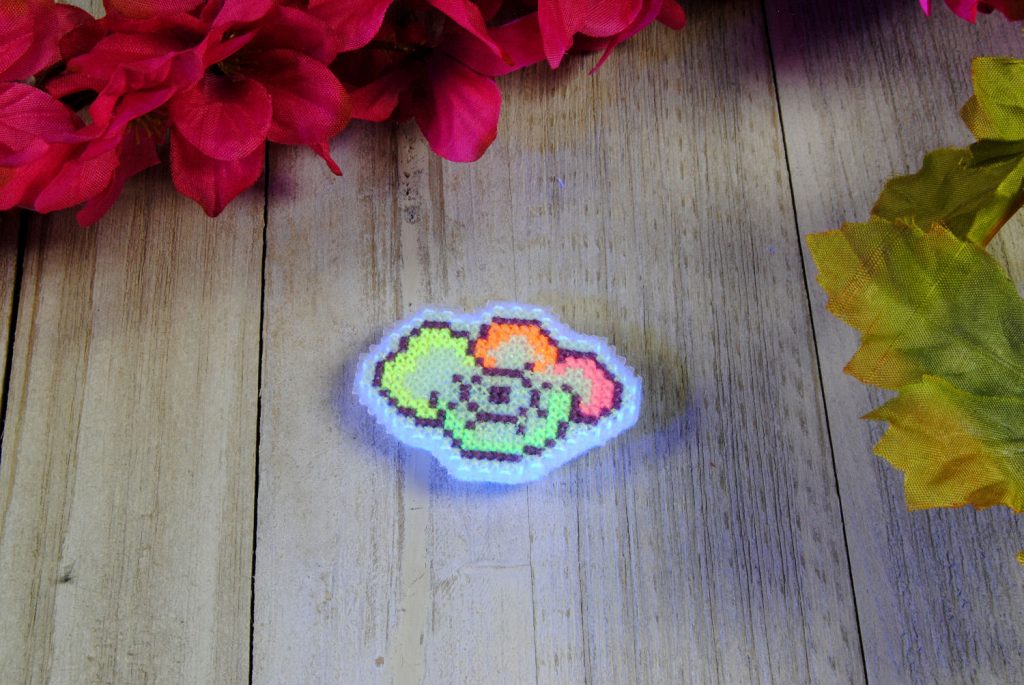
This way you can even taking glowing photos in normal lighting. No more dark boring backgrounds for your glow in the dark stitches!
I do recommend at least dimming the lights a little bit for the best effects though.
Closing thoughts
Overall my general rule of thumb with glow in the dark thread is as follows;
- Stitch slowly.
- Use shorter threads.
- Use it as accents, not the entire design.
Regarding the brands, use DMC thread if:
- You want to pick it up at a local big-box craft store easily.
- You’re stitching large areas.
- You only need white thread that glows green.
Use Kreinik if:
- It is available in your country and/or you don’t mind ordering online.
- You want multiple colors in your designs.
- You want it to glow as brightly as possible.
I hope you found this useful and that it has inspired you to try your hand at stitching some designs that glow in the dark!
If you’d like this 90’s black light poster inspired design, head on over to my Patreon!
